Literacy & Language Arts
Perfection Learning brings decades of expertise in developing easy-to-use and supportive literacy and English Language Arts resources, offering a comprehensive suite of core, elective, and supplemental programs that support students at every stage of their ELA journey. From engaging literature anthologies to programs for ELA electives, to skill-targeted interventions and standards-aligned assessments, our resources provide flexible solutions to meet diverse classroom needs.
Our materials are designed to build essential skills in reading, writing, speaking, and listening—starting with skills-based literacy and advancing to critical analysis and academic writing. Whether used for core instruction, enrichment, or targeted support, out programs help educators drive meaningful growth and foster a lifelong appreciation for language and literature.
Select an option below:
- Literacy Skills & Intensive Reading
- Literature
- Language Arts
- Drama, Speech & Debate
- All
Literacy Skills & Intensive Reading
| Connections: Reading | Preview | Shop |
| Hi-Lo Reading - Cover-to-Cover Books | Shop |
| Graphic Hi/Lo Reading - Fact-to-Fiction | Shop |
| Graphic Hi/Lo Reading - Smart Green Civilizations: Green Lessons from the Past | Shop |
| Reading Essentials in Science | Shop |
| Reading Essentials in Social Studies | Shop |
| Reading Express | Shop |
Literature
| Classroom Libraries | Preview |
| Connections: English Language Arts | Preview | Shop |
| Connections: Literature - High School | Preview | Shop |
| Connections: Literature - Middle School | Preview | Shop |
| Inch and Miles | Shop |
| Literature & Thought | Preview | Shop |
| Passages | Shop |
| Parallel Text | Preview | Shop |
| Perfection Classics | Shop |
| Poetry in Three Dimensions/ Poetry in Six Dimensions | Shop |
| Retold Tales® Literature | Shop |
Language Arts
| Benson Handwriting with Integrated Reading and Language Arts | Preview | Shop |
| Connections: Writing & Language | Preview | Shop |
| Grammar in Practice | Shop |
| Grammar Works For Better Writing | Shop |
| Image Grammar | Shop |
| Perfection Learning Spelling | Shop |
| Research Paper | Shop |
| Vocabu-Lit® (Grades 2-5) | Shop |
| Vocabu-Lit® (Grades 6-12) | Preview | Shop |
| Vocabulary for Success | Shop |
| Vocabulary for the College-Bound Student | Shop |
| Vocabulary for the High School Student | Shop |
| Words to Go! Words to Know! | Shop |
| Writing with Power | Preview | Shop |
Drama, Speech & Debate
| 38 Basic Speech Experiences 11th Edition | Shop |
| Basic Drama Projects 10th Edition | Preview | Shop |
| Center Stage: Projects in Theatre Arts | Preview | Shop |
| Drama for Reading & Performance | Shop |
| Mastering Competitive Debate | Preview | Shop |
| Mastering Competitive Individual Events | Shop |
| Nine Muses: Modern Plays from Classic Myths | Shop |
| Page to Stage: Plays from Classic Literature | Shop |
| Projects in Professional Communications | Preview | Shop |
| Projects in Speech Communication | Shop |
| Shakespeare-ience | Shop |
| Stages of History: Plays About America's Past | Shop |
Connections Reading

Grades 6–12
This reading program is focused on developing strong reading skills with striving readers using excerpts from on-level literary and informational texts.
Grounded in learning science, the program incorporates proven instructional strategies—such as critical reading, differentiation, and formative assessments—to break down learning barriers and support academic growth. The program has also earned its Level III ESSA evidence, demonstrating it has promising evidence to be effective in improving student learning outcomes.
As students read, discuss, analyze, and respond to on-level, high-interest texts, they learn step by step how to unlock meaning. Through multiple reads, students use skilled reading strategies to move from the “what” of the literary piece (central ideas, details), to the “how” (author’s craft), and the “why” (author’s purpose).
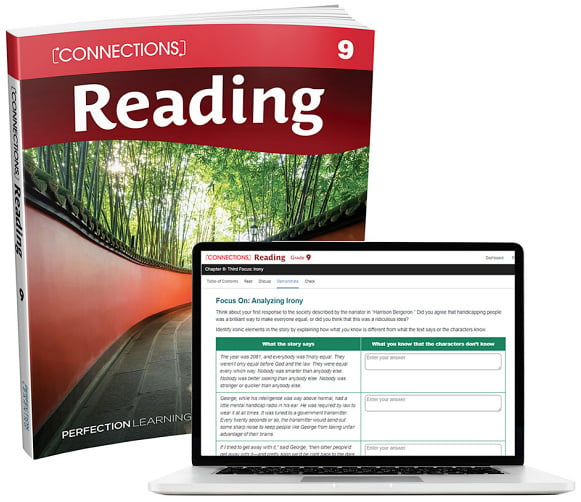
Vocabu-Lit®
Grades 6–12
Build word power through high-quality contemporary and classic literature, nonfiction, essays, and primary source texts. Each literature-based lesson focuses on ten Master Words with seven exercises of increasing complexity to extract meaning, apply vocabulary skills and strategies, and assess mastery.
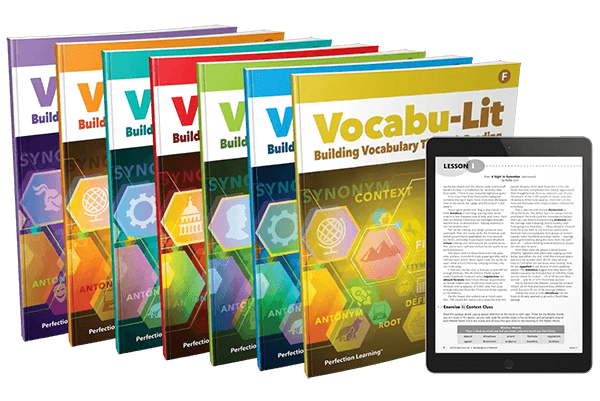
Basic Drama Projects 10th Edition
Grades 9–12
Explore and discuss the dynamic role and impact of theatre in society as well as the dynamic changes in film, television, and electronic media resulting from digital technology. Perfect for both beginning and advanced theatre and technical theatre arts courses!
Each chapter uses step-by-step projects to build students’ confidence and competence in areas ranging from theatre basics and elements of acting to technical theatre, producing/directing, and various types of theatre.
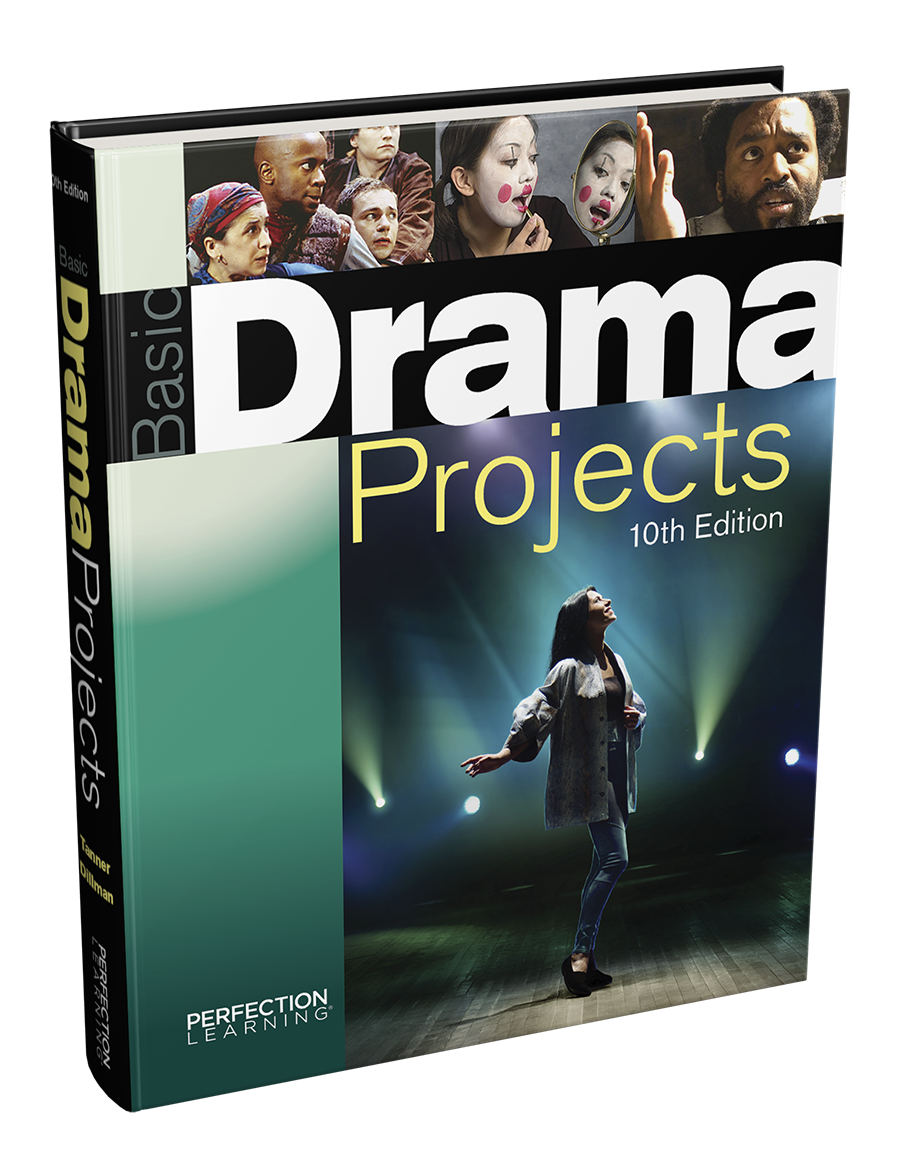
Connections: Literature - Middle School
Grades 6–8
Support learners as they engage in the study of dynamic, relevant texts and bring the richness of diverse voices to students through literature.
Grounded in learning science, proven instructional strategies break down learning barriers and support academic growth.
- Connect students to a diverse world of reading and writing.
- Enable deep understanding, critical thinking, and effective communication.
- Empower academic growth and remove learning barriers.
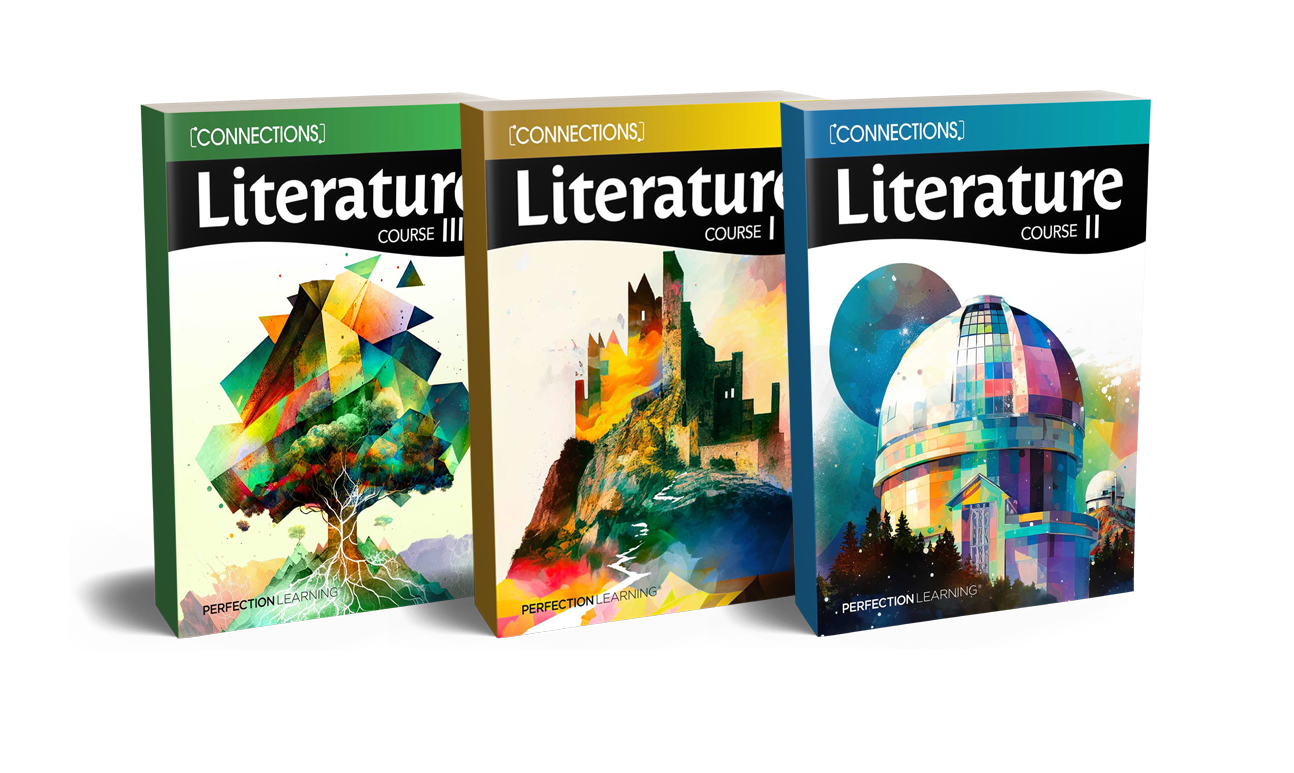
Connections: Literature - High School
Grades 9–12
Immerse students in outstanding literature while developing critical reading and writing skills. Six anthologies each incorporate a literary analysis feature for every selection. Literary Lens activities provide the focus for close reading, questions for discussion and collaboration, and prompts for written responses.
The streamlined lesson design and focused skill development enables quick lesson planning and easy classroom implementation. Integrate into your curriculum by unit, selection, or learning objective.
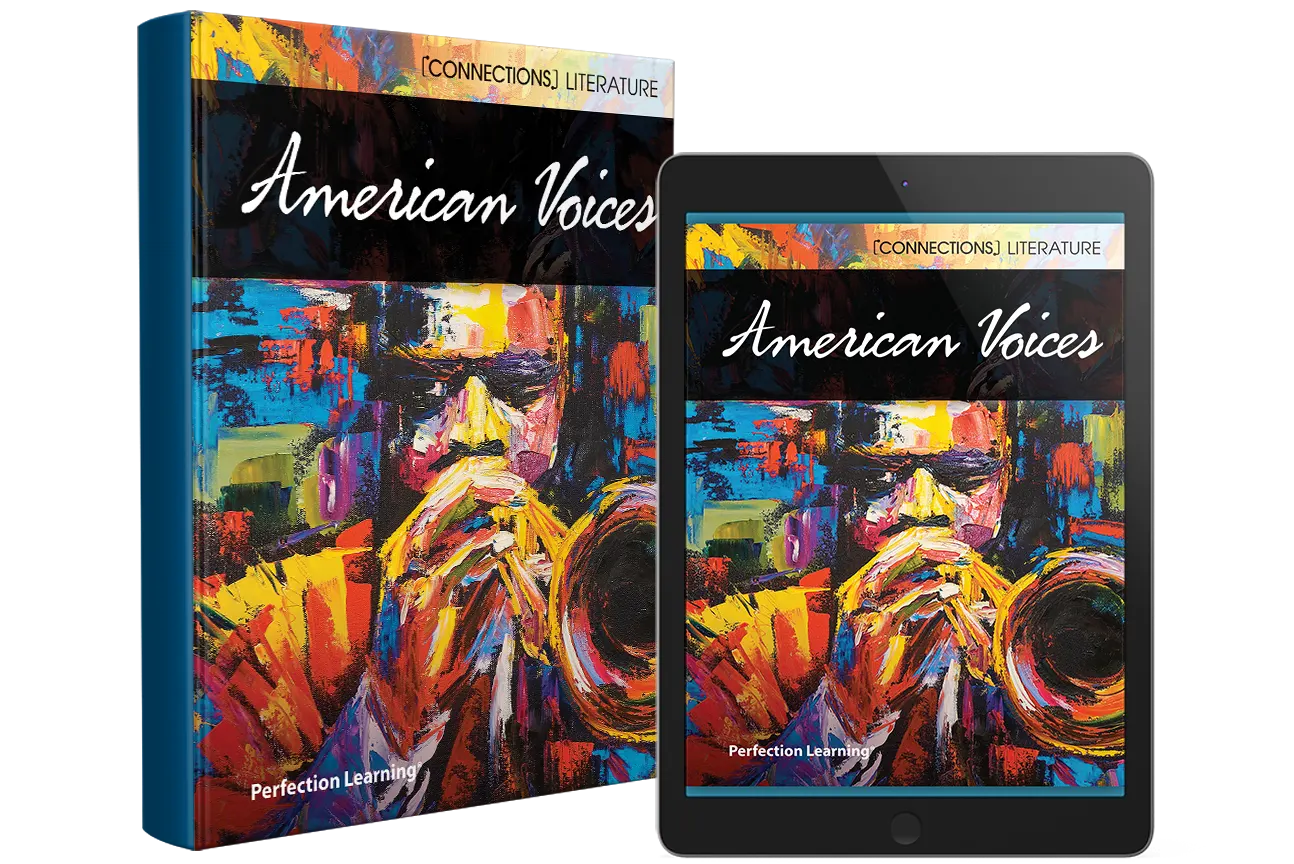
Connections: Writing & Language
Grades 6–12
An easy-to-use, reference-oriented approach helps students develop grammar, usage, mechanics, vocabulary, spelling, and writing and editing skills.
- The student-friendly format is perfect for supporting both instruction and independent writing.
- Each writing or language minilesson focuses on a targeted skill with scaffolded practice, independent practice, and assessment.
- Reproducible student workbooks for language practice and writing practice include grade-level activities to reinforce skills.
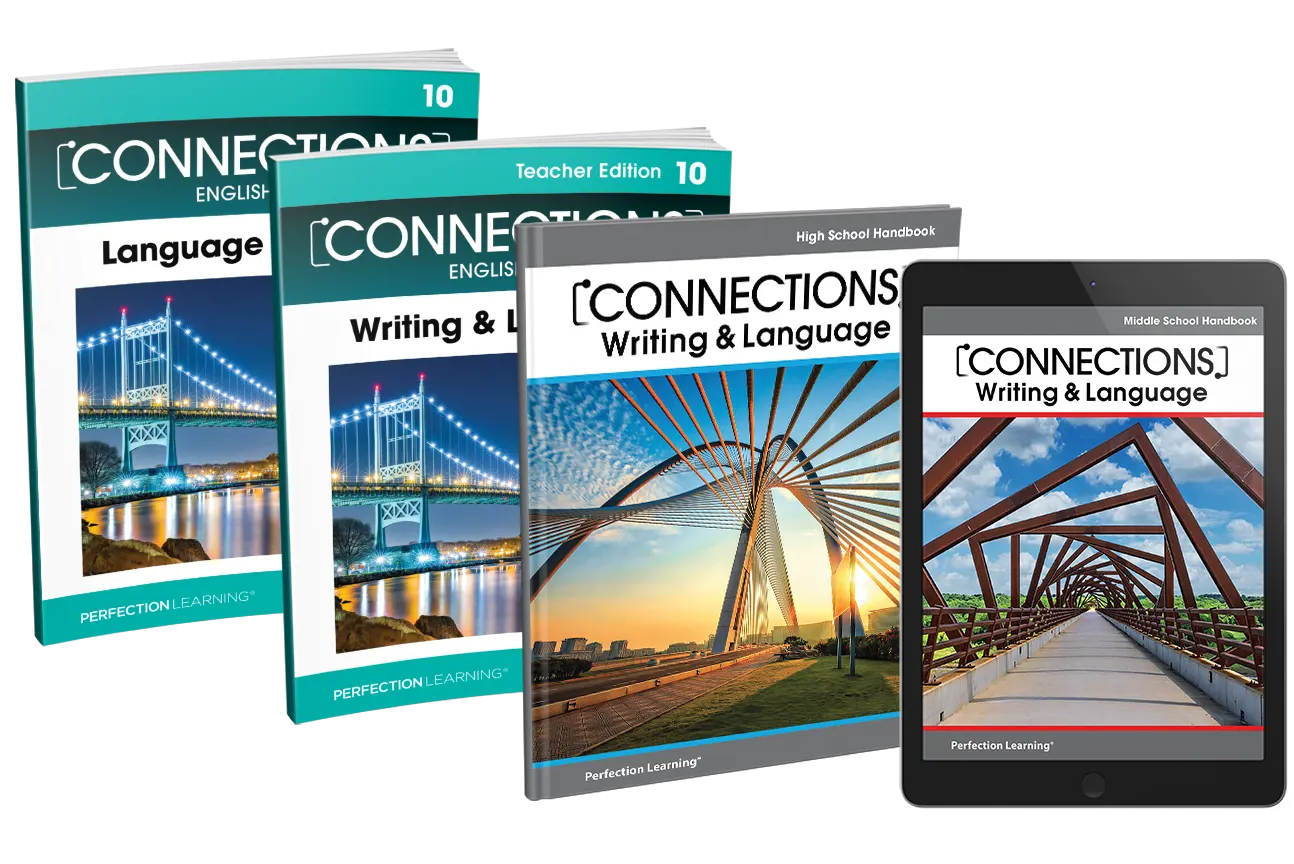
Literature & Thought
Grades 6–12
Flexible resources for thematic text study, critical reading, and analysis help students explore literary themes and genres, historical events and eras, and government and current events. Each of the 25 unit-based anthologies contains a cluster of related readings that explore an Essential Question using critical thinking skills such as comparing, contrasting, analyzing, defining, inferring, and synthesizing.

Connections: English Language Arts
Grades 6–12
While most middle and high school students have achieved automaticity in word recognition, many lag significantly behind in language comprehension. Research-based Connections: English Language Arts focuses on closing this language comprehension gap through scaffolded learning tasks using complex texts.
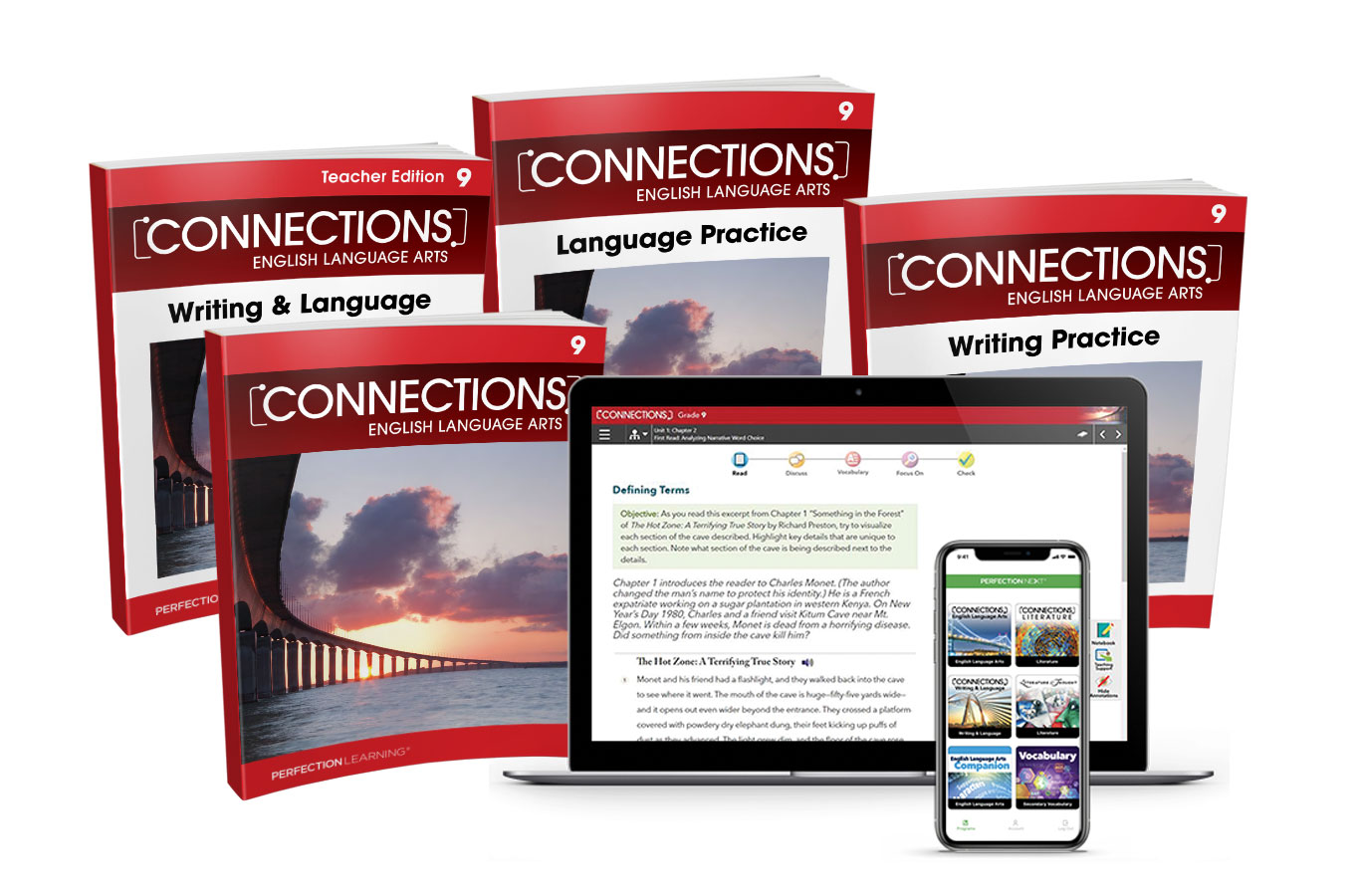
Retold Tales® Literature
Reading Level 4–6 | Interest Level 6–12
Designed for secondary students reading below grade level, Retold novels and anthologies align with commonly taught American, British, and world literature; novels; and myths and folktales. Authentic adaptations maintain the voice, style, and overall meaning of the original text, while comprehension support for English learners and striving readers provides the foundation for inclusive discussions of classic works.

Hi-Lo Reading - Cover-to-Cover Books
Reading Level 1–6 | GRL L–X | Lexile Level 270–920 | Interest Level 2–9
 Motivate your students' reading with engaging chapter books, novels, informational books, and adapted classics for independent reading in social studies, science, and language arts. Easily integrate into your curriculum to ensure all students have access to curricular-aligned topics at their reading levels. Support reading instruction, assess progress, and target skill gaps using title-specific teaching support.
Motivate your students' reading with engaging chapter books, novels, informational books, and adapted classics for independent reading in social studies, science, and language arts. Easily integrate into your curriculum to ensure all students have access to curricular-aligned topics at their reading levels. Support reading instruction, assess progress, and target skill gaps using title-specific teaching support.
Graphic Hi/Lo Reading - Fact-to-Fiction
Reading Level 2–4 | GRL K–T | Interest Level 4–8 | David & Helen Orme
 Designed for reluctant and striving readers, each book includes a fascinating, fact-filled informational section followed by a fiction section with two versions of an engaging story—a full text version and a graphic novel version—on facing pages.
Designed for reluctant and striving readers, each book includes a fascinating, fact-filled informational section followed by a fiction section with two versions of an engaging story—a full text version and a graphic novel version—on facing pages.
Parallel Text
Grades 8–12
 Make classic literature accessible to all students! Ensure comprehension while helping students appreciate the original language of Shakespeare and early British and American authors with the original text and a line-by-line modern translation on facing pages.
Make classic literature accessible to all students! Ensure comprehension while helping students appreciate the original language of Shakespeare and early British and American authors with the original text and a line-by-line modern translation on facing pages.
Introductory material offers historical and cultural context while critical thinking questions and text-based activities throughout encourage discussion and analysis.
Perfection Classics
Grades 6–12
 Integrate classic fiction and nonfiction titles into your curriculum or assign for independent reading. Over 190 titles are available both online and offline, providing convenient access to the canon of classic literature. All titles are also available in print.
Integrate classic fiction and nonfiction titles into your curriculum or assign for independent reading. Over 190 titles are available both online and offline, providing convenient access to the canon of classic literature. All titles are also available in print.
Benson Handwriting with Integrated Reading and Language Arts
Grades K–6
 For over 100 years, Benson Handwriting has helped students develop legible, fluent handwriting—a key to writing success. Each lesson combines consistent letter formation directions and teacher modeling with ELA activities—all in less than 15 minutes per day. Interactive whiteboard software, font software, scripted teacher modeling, QR code video tutorials, and differentiated activities all help ensure student success. Available in vertical or slant letter formation editions—the choice is yours!
For over 100 years, Benson Handwriting has helped students develop legible, fluent handwriting—a key to writing success. Each lesson combines consistent letter formation directions and teacher modeling with ELA activities—all in less than 15 minutes per day. Interactive whiteboard software, font software, scripted teacher modeling, QR code video tutorials, and differentiated activities all help ensure student success. Available in vertical or slant letter formation editions—the choice is yours!
Writing with Power
Grades 6–12
 Equip students with the writing, language, and 21st century skills they need to be successful on high-stakes tests and in college and career.
Equip students with the writing, language, and 21st century skills they need to be successful on high-stakes tests and in college and career.
- Integrates grammar instruction to power students' writing.
- Promotes collaborative learning.
- Supports classroom management.
Center Stage: Projects in Theatre Arts
Grades 6–8
 Center Stage: Projects in Theatre Arts does the legwork for busy teachers, pulling together in one resource, a flexible collection of stimulating, collaborative activities grounded in the latest standards.
Center Stage: Projects in Theatre Arts does the legwork for busy teachers, pulling together in one resource, a flexible collection of stimulating, collaborative activities grounded in the latest standards.
Divided into two parts, Part I focuses on creative drama processes with an emphasis on improvisation. Part II focuses on formal theatre as well as oral interpretation, storytelling, and theatre in the digital age.
Projects in Professional Communications
Grades 9–12
 Develop students’ confidence and competence in workplace communications through project-based activities in interpersonal, problem solving, group, and presentation settings. Each project provides opportunities for independent work; presentation practice; and lively, collaborative discussions in whole class, small group, and peer settings.
Develop students’ confidence and competence in workplace communications through project-based activities in interpersonal, problem solving, group, and presentation settings. Each project provides opportunities for independent work; presentation practice; and lively, collaborative discussions in whole class, small group, and peer settings.
Mastering Competitive Debate
Grades 9–12
 This comprehensive resource for all forms of competitive debate—public forum, Lincoln-Douglas debate, world schools, mock trial, and congressional and parliamentary debate—was written and reviewed by a team of accomplished debate teachers, nationally-known debate directors and judges, and award-winning debate coaches.
This comprehensive resource for all forms of competitive debate—public forum, Lincoln-Douglas debate, world schools, mock trial, and congressional and parliamentary debate—was written and reviewed by a team of accomplished debate teachers, nationally-known debate directors and judges, and award-winning debate coaches.
Projects in Speech Communication
Grades 9–12
 Projects in Speech Communication is designed to build students’ interpersonal, group, and workplace communication skills through active learning. Using a consistent three-step process—Prepare, Present, Evaluate—students learn critical communication skills from first-hand experience and reflection.
Projects in Speech Communication is designed to build students’ interpersonal, group, and workplace communication skills through active learning. Using a consistent three-step process—Prepare, Present, Evaluate—students learn critical communication skills from first-hand experience and reflection.
Additional Resources
| Grammar in Practice | Shop |
| Grammar Works For Better Writing | Shop |
| Image Grammar | Shop |
| Perfection Learning Spelling | Shop |
| Research Paper | Shop |
| Vocabu-Lit® (Grades 2–5) | Shop |
| Vocabulary for Success | Shop |
| Vocabulary for the College-Bound Student | Shop |
| Vocabulary for the High School Student | Shop |
| Words to Go! Words to Know! | Shop |
Additional Resources
| 38 Basic Speech Experiences 11th Edition | Shop |
| Drama for Reading & Performance | Shop |
| Mastering Competitive Individual Events | Shop |
| Nine Muses: Modern Plays from Classic Myths | Shop |
| Page to Stage: Plays from Classic Literature | Shop |
| Shakespeare-ience | Shop |
| Stages of History: Plays About America's Past | Shop |


